Discover how to plant and sow lettuce seeds directly into the vegetable garden’s soil…
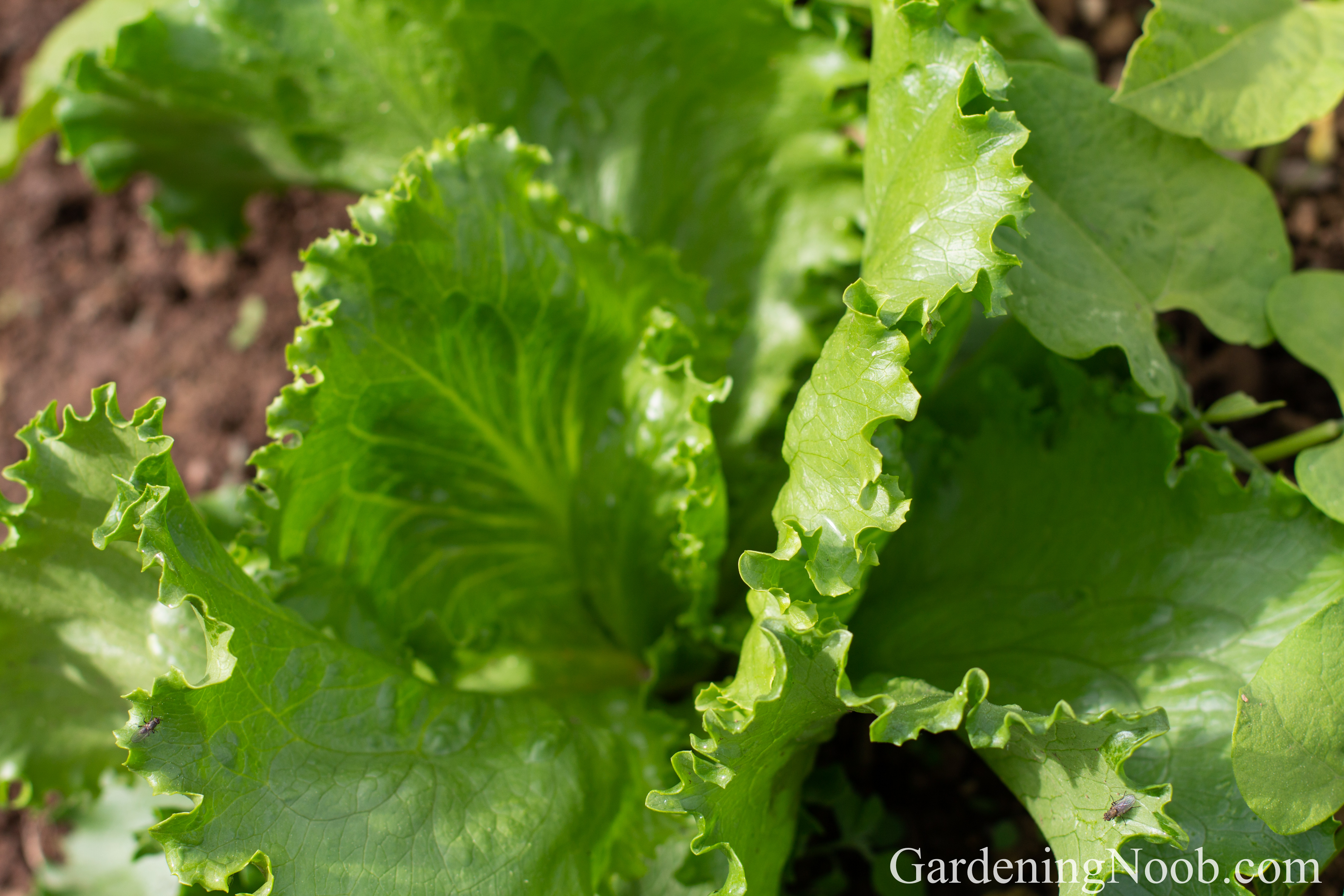
I have been growing lettuce ever since I started with vegetable gardening. I love this leafy green and never get tired of it. I plant it every single season multiple times. Nowadays, I really don’t change much as far as growing is concerned – except the varieties. There are so many to choose from that I just can’t resist trying a new one every now and then…
Since I already explained when I usually start planting it, it’s time to take another step forward and look at how to plant or sow lettuce seeds directly into the soil in the vegetable garden. You will notice that the planting process itself is rather straightforward. However, there are other, not-so-obvious, but in my opinion important things that are also worth considering before you rush out and start dispersing seeds into the ground. I invite you to keep reading to discover more!
Plant it shallowly and scarcely
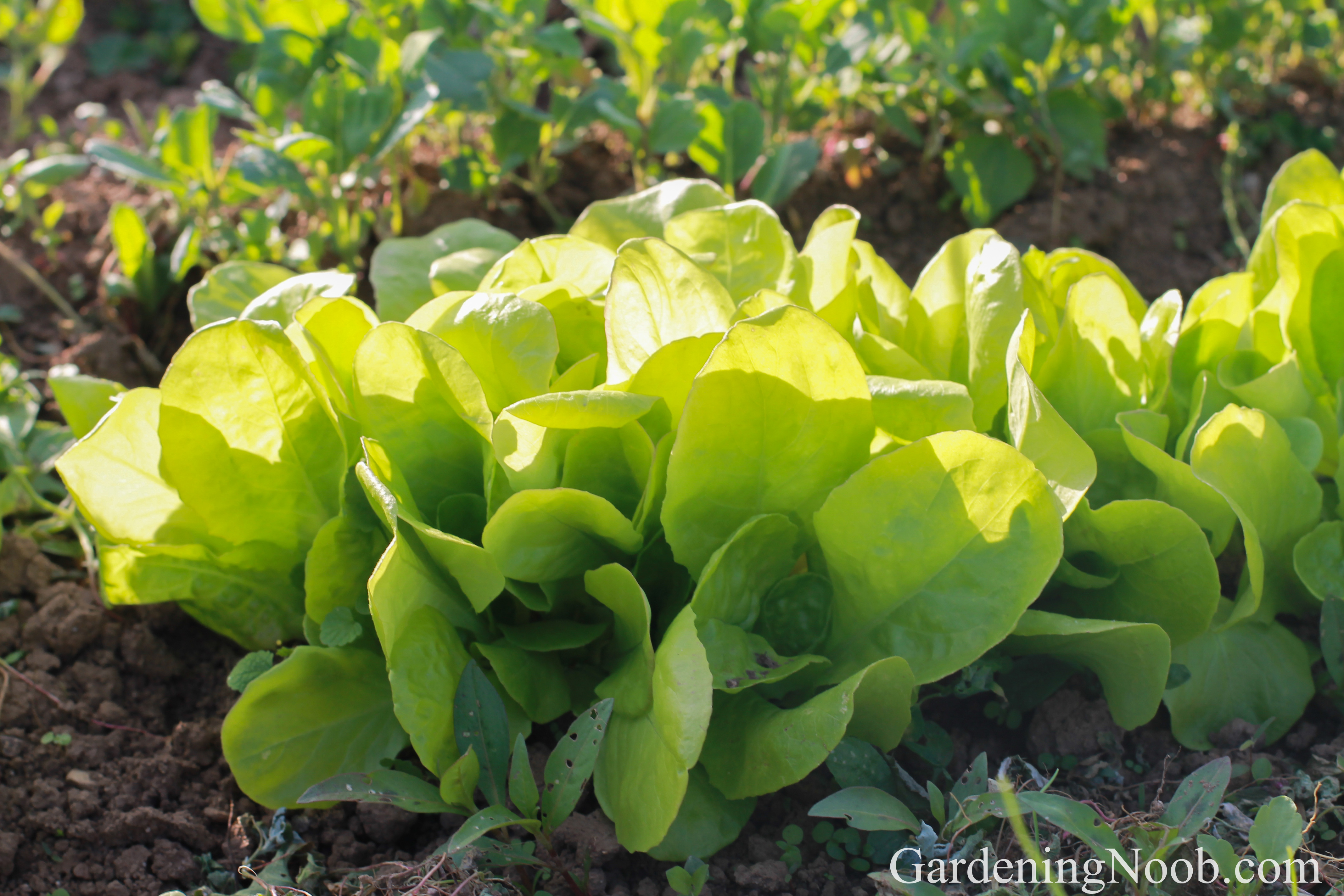
I kept things simple when I first planted this leafy green vegetable. I started by chosing a growing space in my garden for it. I tilled that growing space with a shovel and evened it out afterwards with a bow rake…
Then I used a trowel to create shallow, tidy lines in the soil. The lines were approximately ten to twelve inches (25 to 30 centimeters) apart from one another. I then scattered the seeds into those lines and then used the bow rake again to flatten out the surface and cover the planted seeds with soil. In the end, I watered this newly created garden bed thoroughly. And that was pretty much it.
While I haven’t change the “technicalities” much since then, I do strive to:
- Plant it shallowly. In my experience, lettuce has a high germination rate. But that does not help much if you bury it’s seeds too deep. They won’t sprout. That’s why I always aim to sow it no deeper than one inch (three centimeters). In fact, the shallower the better. The seeds do need to be covered with soil though.
- Plant it scarcely. It’s seeds are small and difficult to handle with bare hands. It is easy to oversow them if you’re not careful – especially when the wind is blowing hard. Combine that with high germination rate and you are bound to end up with an overcrowded garden bed. Thinning is then your only way out, but it comes with a downside. As you remove the excess plants, you are likely to disrupt the roots of the remaining plants and slow down their growth for a while.
- Plant it in a moist soil. The fastest way to get the plants up and running is to sow the seeds right before or just after it rains. Water helps create a better seed-to-soil contact and sort of activates the seeds and make them germinate faster. Luckily, there’s no shortage of rainfall during spring and autumn – which I consider to be the best seasons for planting and growing lettuce – so I usually don’t have to wait long for the rain. I do use tap water during dry spells though – it’s definitely better than nothing.
- Plant it in nutrient-rich parts of the garden. This leafy green is supposed to be a heavy-feeder which grows well only if the soil is fertile. Since I am constantly feeding my garden soil with all sorts of organic matter, it gets enough nutrients for rapid growth and development. If you’re doing the same, then the soil in your garden is likely enough nutrient-rich as well. Otherwise, it may not grow well. I suggest you look into soil preparation for growing leafy greens prior to planting it.
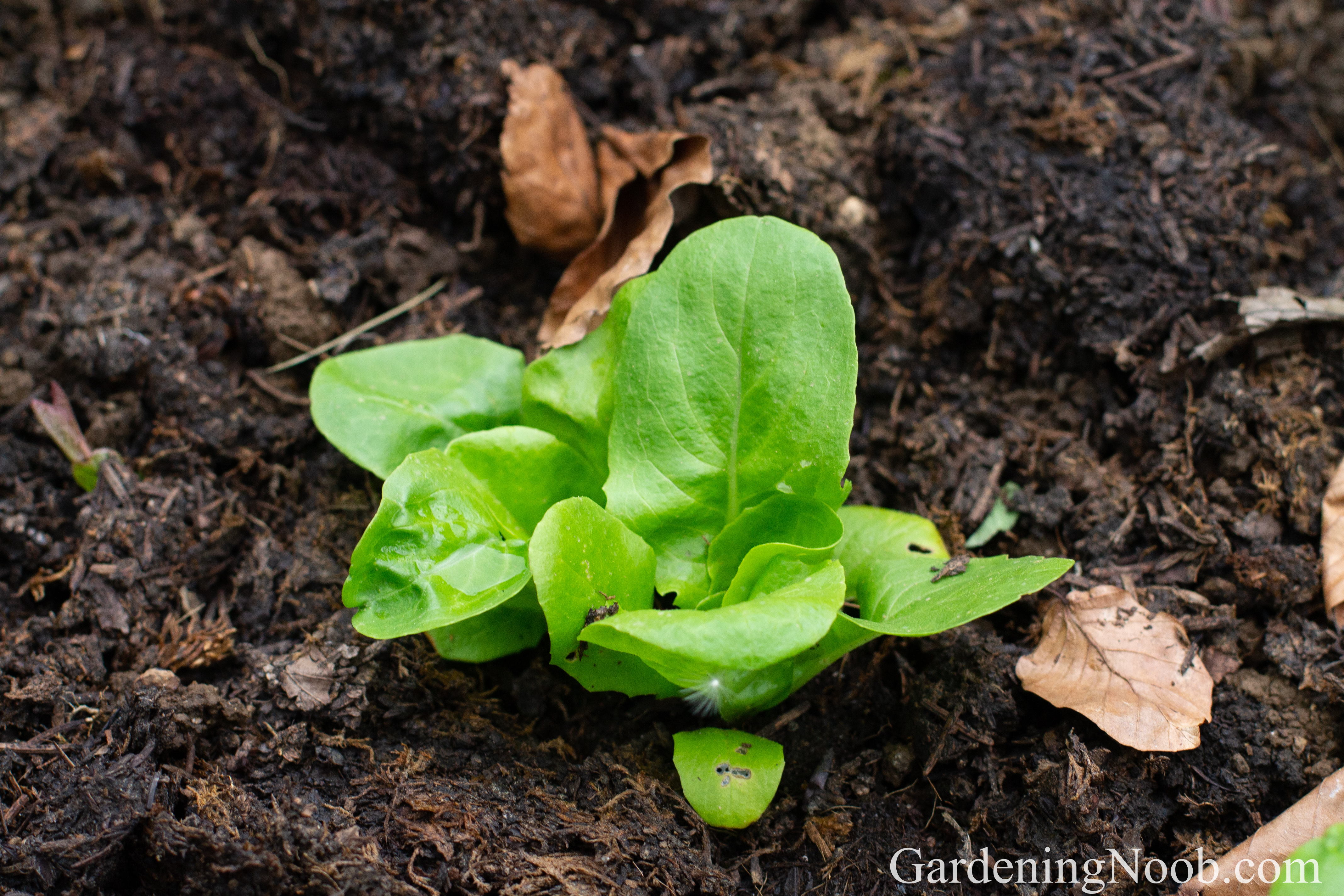
Grow it as a side crop
Back then when I started I grew lettuce as a main crop in the garden. It means that I planted it in it’s own garden bed with nothing else growing in it. There’s no denying, it grew well this way. At some point, we had more harvest then we could eat. But there was one big problem with this method…
You see, this leafy green grows and matures quickly. It goes from a seed to a harvest-ready plant in less than three months. So, when I harvested it towards the end of spring, the garden bed I grew it in was emptied and it stayed empty until the end of the season. I obviously wasn’t maximizing the full potential of that growing space because nothing grew in it for months.
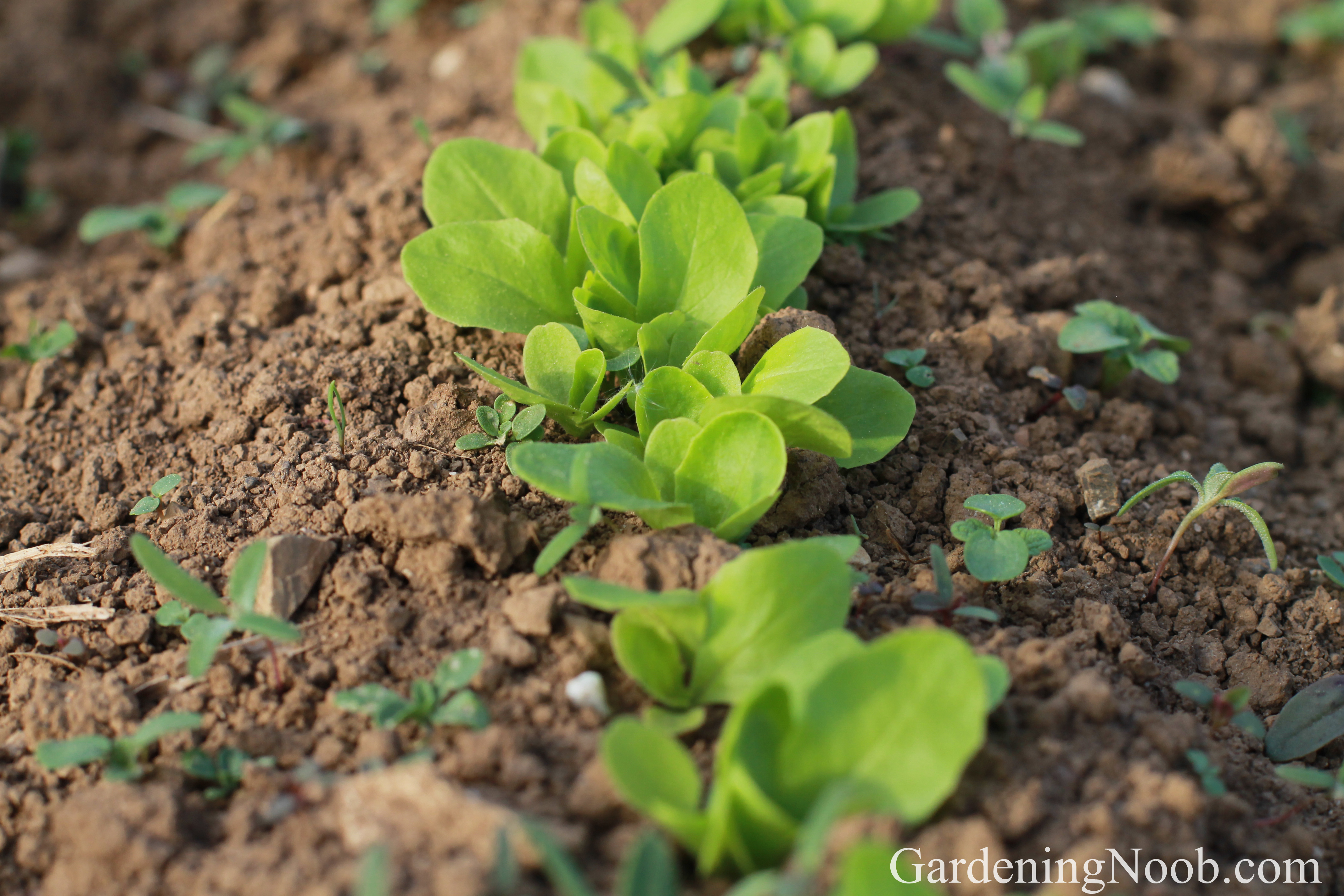
One way to solve this would be to plant another vegetable there right after the harvest. I could also wait until the end of the summer and plant lettuce there again. It would certainly be better than leaving it empty. In both cases, however, the soil would still end up being bare for a while which I didn’t like…
So, instead of growing lettuce as a main crop, I came up with the idea to grow it as a side crop. It turned out great and I’m still doing it nowadays. We still get more than enough harvest while at the same time have an extra growing space available for other vegetables!
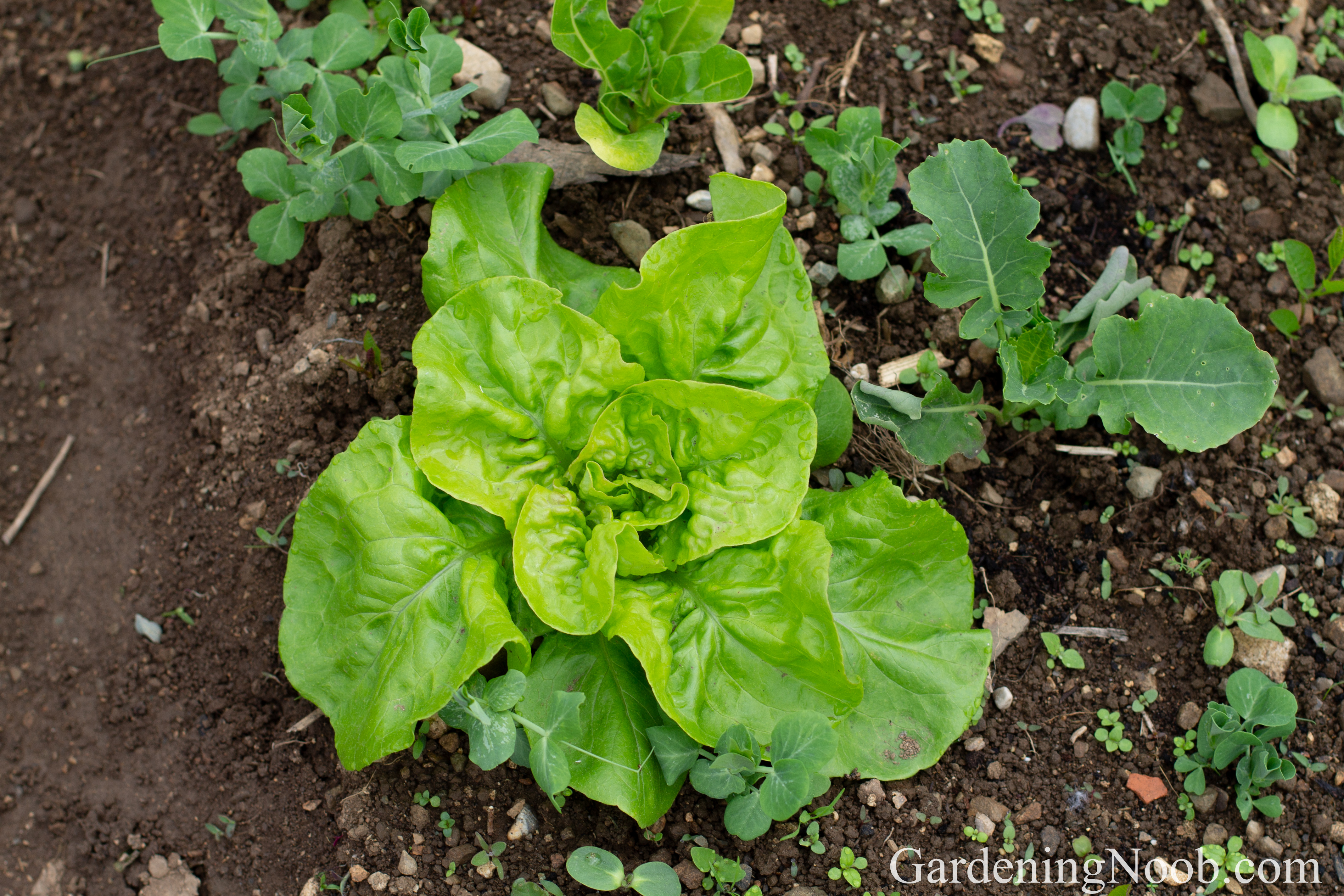
The fact that this leafy green makes a great companion plant to most vegetables out there has made things even easier for me…
I like to combine it with vegetables that take much longer to grow. This includes both cold-season vegetables (such as broccoli, cauliflower, beetroot, leaks, carrots and even parsnip) and warm-season vegetables (such as zuchinni, squash and tomatoes) as well as herbs (such as chives, mint and basil). Once the lettuce is big enough and I harvest it, the long-maturing vegetables stay behind and have extra growing space available. This way, my garden beds and rows never stay empty and we get more harvest than we would otherwise.
Plant it more than once
Another mistake that I would do when I was still growing lettuce as a main crop was that I would plant all the seeds in the same day. As you can imagine, all the plants grew at approximately the same speed. They would also reach the harvest stage at approximately the same time. It means that we had plenty of produce, but only for a week or two – and nothing afterwards…
You see, the thing with this leafy green is that once it is ready for harvest you can’t just leave it to keep growing. You either cut it off and eat it. Or you lose it. Because sooner rather than later it starts bolting (flowering) and ultimately becomes bitter and unedible.
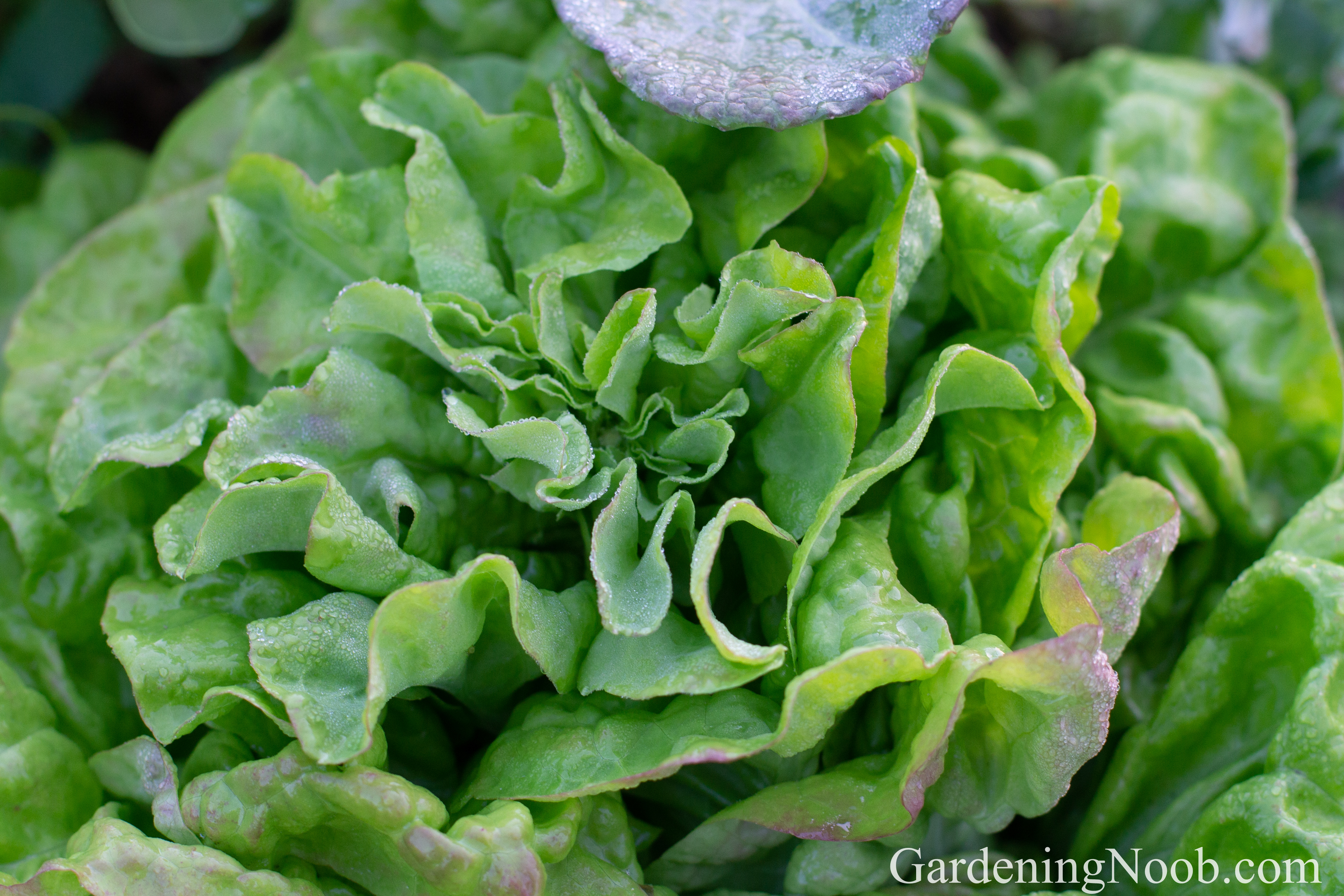
So, nowadays, instead of doing just one big planting of the season, I sow it several times in different time intervals. I spread my planting activities throughout several weeks instead of doing it all in just one day. This may take some more work and some more discipline, but it ensures a more steady harvest over a period of time that is much longer than two weeks.
Wait until the seeds sprout
Once the seeds are in the ground, I usually have to wait about a week or so for the plants to emerge out of the ground. And once they are up and running, the harvest is just around the corner. Well, almost. I still have to do a few minor things to help the plants grow and reach the harvest stage. Want to know more about it? Then head over to how to grow and care for lettuce!
